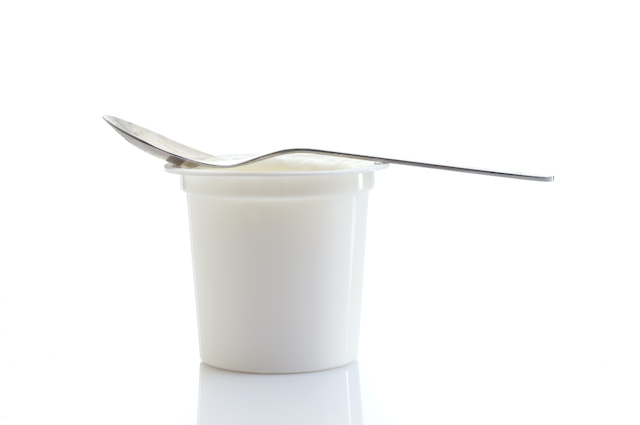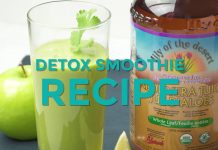
We try to do the right thing when it comes to being healthy: We exercise, eat right and try to make healthy choices—but could we be doing it all wrong? Here are things you might think are healthy but may not be.
Salad Dressings
When it comes to products, especially food and beverages—product labels and marketing—play a huge role in how healthy we think they are.
For example, let’s look at store-bought salad dressings. Some will put a healthy ingredient like olive oil on the front label, which makes us think it’s really healthy because olive oil is HEALTHY, but when you look at the ingredients list on the label you see it also has canola oil, sugar, and other preservatives—which unfortunately makes it not so healthy.
When buying store-bought dressing, look for brands that are clean, and only use olive or avocado oil and don’t have any added sugars or unnecessary preservatives.
Or alternatively, you can make your own at home. It is so easy! I make a delicious salad dressing using only 4 ingredients: olive oil, lemon juice, garlic, and a pinch of salt. That’s it! You can even swap the lemon juice for apple cider vinegar or balsamic if you prefer the taste.

Yogurt
Often yogurt is labeled at being fat-free. Personally, I believe in eating fat, but the good kind, and in moderation. Our brain is made up of 60% fat, so you want to eat good quality fats like olive and avocado oil as well as omega 3’s like fish oil, to help reduce inflammation in our body, and improve brain function (like memory).
The issue with low fat or fat-free foods is that in many cases the fat is replaced with sugar and carbohydrates—which can raise blood sugar levels and leave us feeling hungry. Fat also helps us feel full after eating it.
When it comes to yogurt or dairy products in general, we do want to be mindful of eating too much fat because it’s mostly saturated fat, as opposed to monounsaturated or polyunsaturated fats like olive oil and omega 3’s. That’s where moderation comes in. If you eat dairy, read the labels to make sure you’re getting no more than 2 or 3 grams of saturated fat per serving.
Zero calorie or diet drinks
If you’re talking about drinking a zero-calorie drink like water, I’m a huge fan…make sure to drink half your weight in ounces every day to stay properly hydrated. BUT if you’re referring to diet soda and drinks, then I’m not a fan. Here’s why: “diet” beverages generally use artificial sweeteners instead of sugar to sweeten them…and when we drink them, they trick our brain into thinking it’s getting glucose, but when it doesn’t, we end up reaching for sweeter foods later on. If you’re looking for low-calorie sweet beverages make your own iced tea with a little xylitol, stevia, monk fruit, or erythritol as they won’t negatively affect blood sugar levels the way artificial sweeteners can.
Now let’s move to the other extreme—smoothies. Smoothies are a great way to get the nutrients we need on a daily basis, but many commercially available smoothies contain a large amount of sugar because it’s either added to the smoothie itself through the base that’s used, or they use a fruit syrup instead of fresh fruit. I love making my own smoothies in my blender and I throw in whatever I have in the fridge: fruits, veggies, protein powder, and nuts. To keep the sugar content down, you can use water as the base, or unsweetened plant-based milk.
Subscribe to our YouTube Channel.
Packaged snacks
When it comes to snacking, be sure to read the ingredients to see if they have any preservatives, artificial colors or flavors, and to determine how healthy they are.
For example, my daughter loves vegetable chips—they’re crunchy and the ingredients are pretty clean, but it’s important to note that they don’t have enough vegetables to replace any of the 5-10 servings a day required for a healthy diet.
Trail mix is another example. Some brands of trail mix contain food coloring and sulfites, so while they may have some healthy ingredients, unfortunately adding these to the package makes them not so healthy. The good thing about trail mix is easy to make yourself. Mix together pumpkin and sunflower seeds, nuts, dried fruit, and whatever else you have in your cupboard.
Loofah sponges
If you like to use a loofah in the shower, did you know that dirt and skin cells can get trapped inside it? It’s really important to allow the loofah to dry properly after each use—otherwise, you’re putting the dirt and bacteria back on your body. You can dry them outside of the shower, and replace them if they smell or change color. Dry brushing is also very effective for removing dirt and dead skin cells. Rinse your dry brush and allow it to dry.
Dental care
Of course, it’s important to brush your teeth as often as you can after you eat, but if you brush it too soon after eating it could have a negative effect on your enamel, especially if you’ve eaten acidic foods. Ideally, you want to wait between 30 and 60 minutes after eating. You can drink water or chew natural gum with xylitol while you’re waiting. This can help clean your teeth before you brush them and xylitol has been shown to inhibits the growth of the bacteria that cause cavities,
And finally, many of us keep our toothbrushes on the counter in the bathroom. If you do that, make sure it’s nowhere near your toilet because when we flush it releases bacteria in the air for up to 2 hours, many of which can land on your toothbrush. Ewww.
Subscribe to our YouTube Channel.
Bottom Line
We love sharing our knowledge with you to help you make healthier choices every day. Be sure to read labels and steer clear of ingredients that can masquerade as "healthy" plus our personal care tips can help as well.
Read this next:
Salty Snacks: Unjunk Your Junk Food
Can Junk Food Really Be Addictive?
9 Amazing Foods for Healthy Teeth










